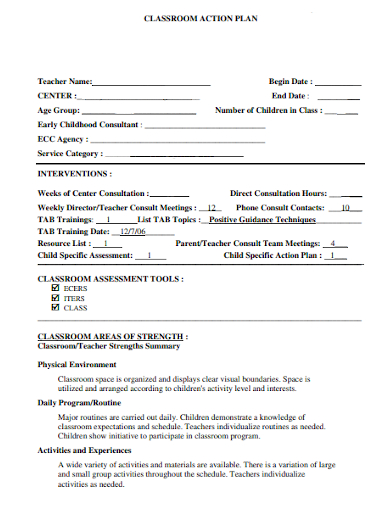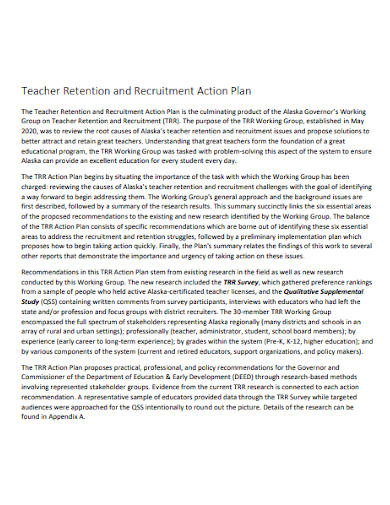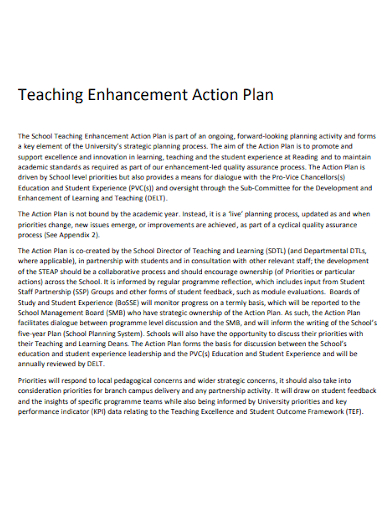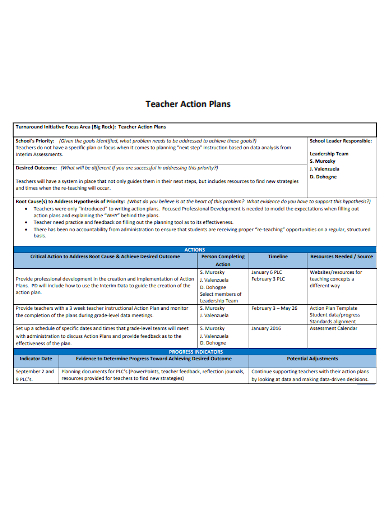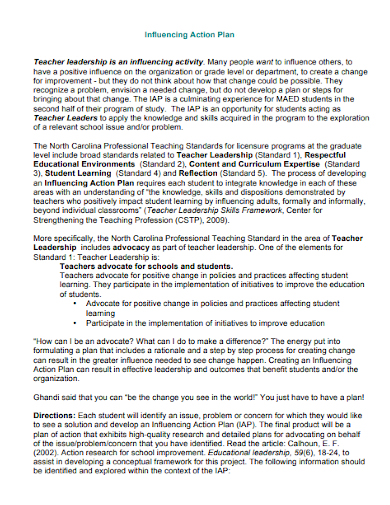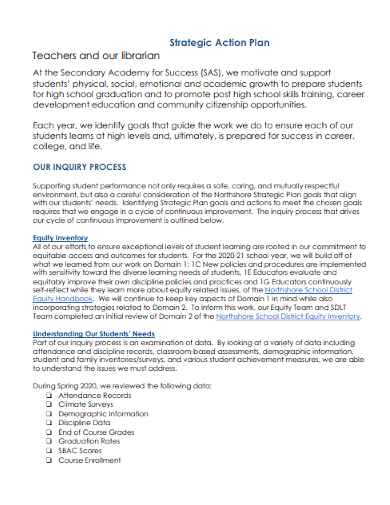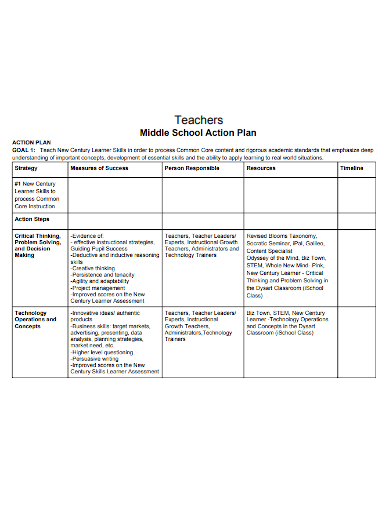You can use planning to prepare for the challenges ahead of you and keep you on track. You can also increase your productivity and stay focused if you have a good action plan in place. It directs you in the right direction. You’ll know exactly what you need to do because an action plan lays out exactly what needs to be done and when it should be completed. You’ll have a reason to stay engaged and dedicated throughout the project if you write down and plan out your goals in steps. You can monitor your progress toward your goal with an action plan. It will help you focus your tasks based on effort and impact because you are listing all of the steps you need to complete in your action plan.
10+ Teacher Action Plan Samples
An action plan is a method for systematically defining a goal, devising strategies for achieving it, and determining how you will determine if you have achieved it. Teachers can use action plans to help us achieve our professional goals as well as to help students achieve theirs. Students can benefit from action plans because they force us to define concrete goals that are based on a student’s strengths, weaknesses, and prior knowledge.
1. Teacher Action Plan Template
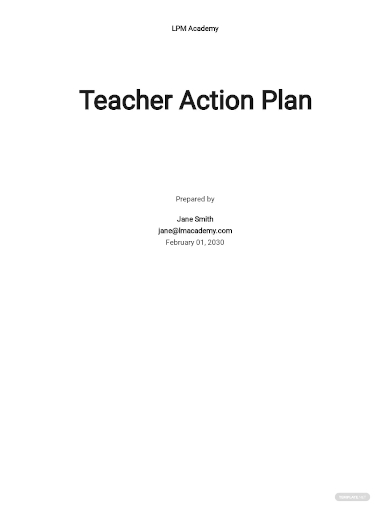
2. Classroom Teacher Action Plan
3. Teacher Retention and Recruitment Action Plan
4. Teacher Teaching Enhancement Action Plan
5. Sample Teacher Action Plan
6. Optional Corrective Teacher Action Plan
7. Teacher Influencing Action Plan
8. Teacher Strategic Action Plan
9. Teacher Middle School Action Plan
10. Teacher Action Pre Planning
11. Teacher Performance Improvement Action Plan
How to Write an Action Plan?
- Define your end goal – You are setting yourself up for failure if you don’t know what you want to do and how you want to get there. Have a new project in mind? Begin by deciding where you are now and where you want to go in the future. A problem has been solved, but what is the next step? Before deciding on a solution, analyze the situation and look into it. Then make a list of your goals. Run your goal through the SMART criteria before moving on to the next step. To make this process easier, use this SMART goals worksheet. Share it with your friends and family to get their opinions.
- List down the steps to be followed – The goal is a given. What should you do to make it a reality? Make a rough list of all the tasks that need to be completed, as well as the people who are responsible for them. When it comes to this process, it’s critical that everyone on your team is involved and has access to the document. Everyone will be aware of their roles and responsibilities in the project as a result of this. Make certain that each task is well-defined and achievable. Break down larger and more difficult tasks into smaller ones that are easier to complete and manage.
- Prioritize tasks and add deadlines – By prioritizing the tasks, it’s time to reorganize the list. You may need to prioritize some steps because they may obstruct other sub-steps. Include deadlines, but make sure they are achievable. Before deciding on deadlines, speak with the person in charge of carrying it out to learn about his or her capabilities.
- Set milestones – Milestones can be thought of as mini-goals that build-up to the ultimate goal. The benefit of adding milestones is that they give team members something to look forward to and keep them motivated even if the deadline is a long way off. Start with the end goal in mind and work your way back as you set goals. Keep in mind that the time between the milestones you set should not be too short or too long. It’s a good idea to set milestones apart by two weeks.
- Identify the needed resources – It’s critical to make sure you have all of the resources you’ll need to complete your project before you start. If they aren’t available right now, you’ll need to make a plan to get them. Your budget should be included in this as well. If there are any costs associated with each task, you can mark them in a column on your action plan.
- Visualize your action plan – The goal of this step is to create something that can be shared with everyone and that everyone can understand at a glance. Whether you use a flowchart, a Gantt chart, or a table to create your action plan, make sure it clearly communicates the elements we’ve identified so far – tasks, task owners, deadlines, resources, and so on. This document should be easily editable and accessible to everyone.
- Monitor, evaluate, and update – Give yourself some time to reflect on your team’s progress. On this final action plan, you can mark tasks that have been completed as completed, highlighting how far you’ve come. This will also bring up any tasks that are pending or delayed, and you’ll need to figure out why they’re behind schedule and come up with a solution. The action plan should then be updated as a result.
FAQs
When can action plans become helpful?
- When a student’s behavior issues make it difficult for you to deal with, it’s a good idea to talk to them about them.
- When you can’t figure out how to help a student who is having trouble with his studies and you don’t know what to do about it.
- When you want to make sure that your teaching is meeting the needs of a student who is far ahead of his peers in a particular subject area.
What are the benefits of an action plan?
- It directs you in the right direction. You’ll know exactly what you need to do because an action plan lays out exactly what needs to be done and when it should be completed.
- You’ll have a reason to stay motivated and committed throughout the project if you write down and plan out your goals in steps.
- You can track your progress toward your goal with an action plan.
- It will help you prioritize your tasks based on effort and impact because you are listing all of the steps you need to complete in your action plan.
If you want to see more samples and formats, check out some teacher action plan samples and templates provided in the article for your reference.
Related Posts
FREE 7+ Fashion Business Plan Samples in PDF
FREE 10+ Sprint Planning Samples In MS Word | Google Docs | PDF
FREE 10+ Wedding Planning Samples in MS Word | Apple Pages | Powerpoint | PDF
FREE 9+ Monthly Study Planner Samples in PSD | Illustrator | InDesign | PDF
FREE 9+ Sample Curriculum Planning Templates in PDF | MS Word
FREE 10+ Teacher Development Plan Samples in MS Word | Google Docs | Apple Pages | PDF
FREE 10+ Basketball Practice Plan Samples in PDF
FREE 12+ School Business Plan Samples in PDF | MS Word | Apple Pages | Google Docs
FREE 7+ Client Strategic Plan Samples in PDF | MS Word
FREE 11+ Trucking Business Plan Templates in PDF | MS Word | Google Docs | Pages
FREE 7+ Small Hotel Business Plan Samples PDF | MS Word | Apple Pages | Google Docs
FREE 14+ Bakery Business Plans in MS Word | PDF | Google Docs | Pages
FREE 4+ Yearly Lesson Plan Samples in PDF
FREE 50+ Strategic Planning Samples in Google Docs | Pages | PDF | MS Word
FREE 10+ Construction Project Plan Samples in MS Word | Google Docs | Apple Pages | PDF

